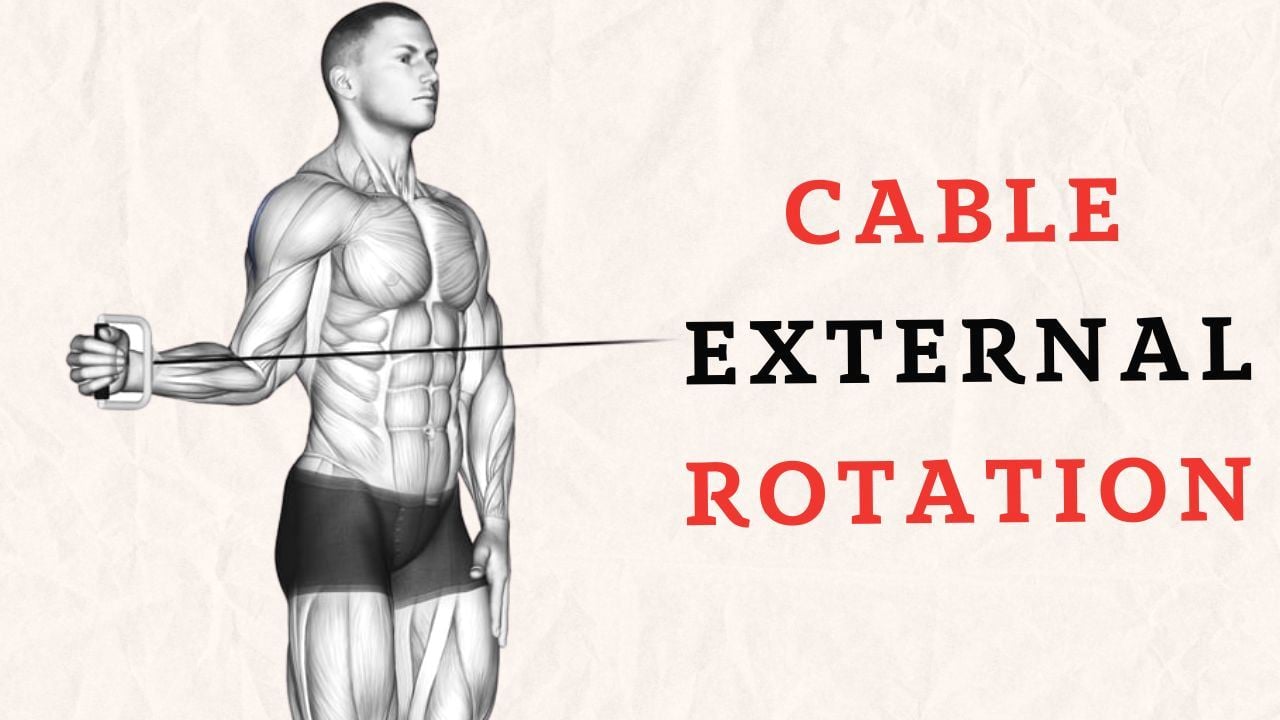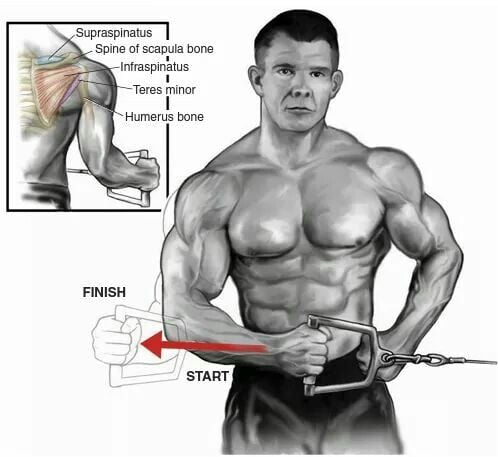Cable external rotation is an isolation exercise that targets the rotator cuff muscles, specifically the infraspinatus and teres minor. A strong rotator cuff is like the foundation for your healthy shoulder.
Strengthening it reduces the risk of painful conditions like rotator cuff tears and impingement.
Imagine your shoulder as a ball and socket joint. The external rotation movement is like turning that ball outward. Now, picture doing this movement with a cable attachment. That’s is cable external rotation.
Unlike free weights, cables provide consistent resistance during an external rotation, and effectively engage the rotator cuff muscles from start to finish.

Cable External Rotation Muscles Worked
- Primarily Worked Muscles: Rotator cuff muscles, specifically Infraspinatus and Teres minor
- Secondary Muscles: Rear deltoid and Supraspinatus
- Stabilization Muscles: Core muscles, Rhomboids, Trapezius (middle and lower Fibers)

How To Do Cable External Rotation
- Set the cable pulley at a height slightly above your waist.
- Attach a handle to the pulley and hold it with your outer hand (the one farther from the machine). Your forearm should be across your body, almost touching your torso.
- Stand sideways to the cable machine, with your feet shoulder-width apart.
- Your upper arm should be tucked into your side, forming a 90-degree angle at the elbow.
- Slowly rotate your arm outward, keeping your elbow fixed by your side. Your forearm should move away from your body in a smooth arc.
- Rotate until your forearm is perpendicular to your torso (or as far as comfortable). Make sure not to over-rotate or don’t let your elbow drift away from your body.
- Slowly bring your forearm back to the starting position.
- Complete the desired number of reps, then switch to the other arm.
Tips and Form
- Keep your elbow bent at 90 degrees and fixed close to your side.
- Keep your shoulder blade retracted and depressed throughout the movement.
- Keep your elbow tucked into your side to isolate the rotator cuff. Avoid flaring your elbow outward, as this can shift the focus to the deltoid.
- Keep your wrist straight and aligned with your forearm throughout the movement. Avoid letting it bend or twist.
- Rotate your arm outward only until your forearm is in line with your body or slightly past it. Avoid forcing the range of motion beyond what feels comfortable and controlled.

Manish is a NASM-certified fitness and nutrition coach with over 10 years of experience in weight lifting and fat loss fitness coaching. He specializes in gym-based training and has a lot of knowledge about exercise, lifting technique, biomechanics, and more.
Through “Fit Life Regime,” he generously shares the insights he’s gained over a decade in the field. His goal is to equip others with the knowledge to start their own fitness journey.
